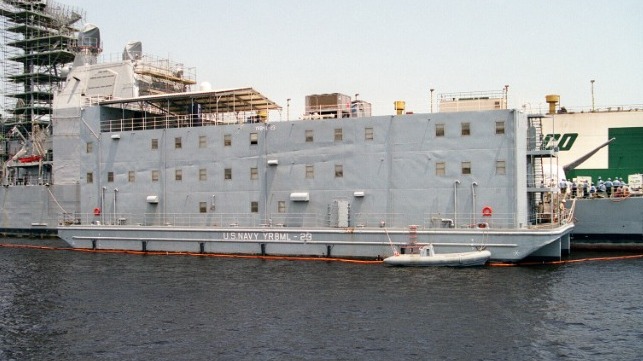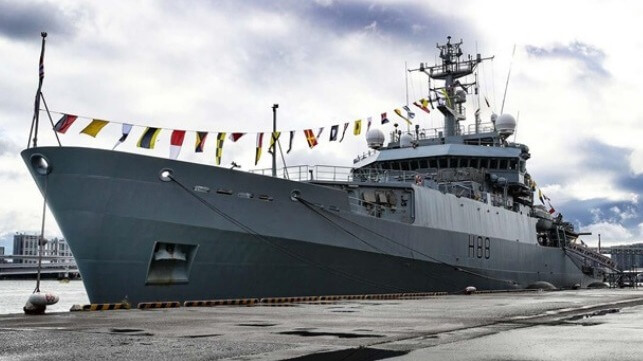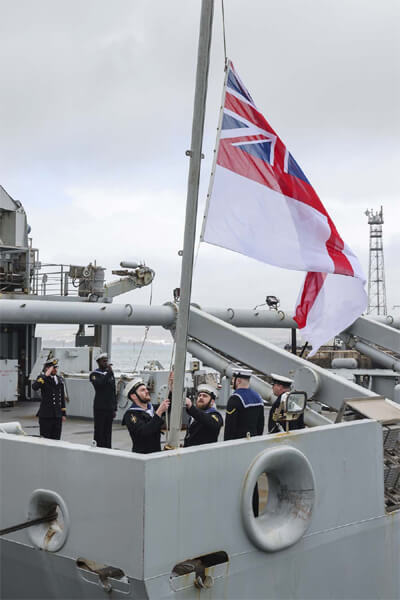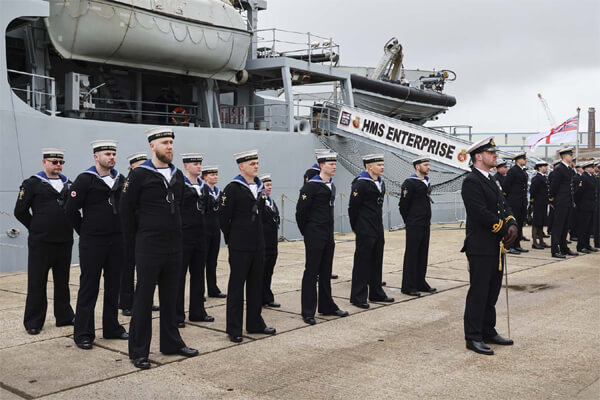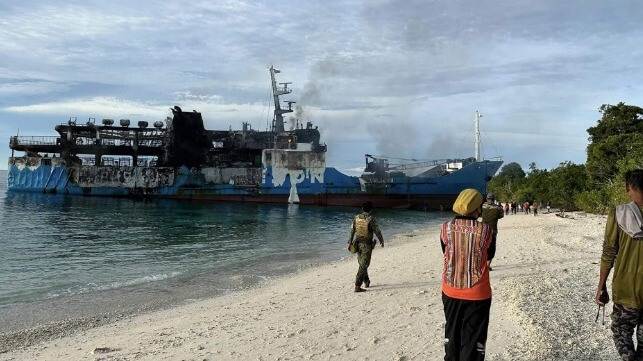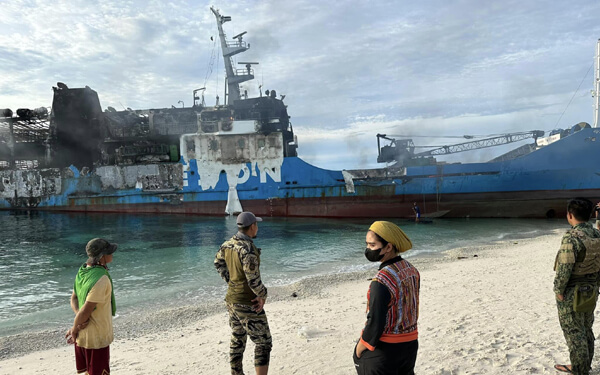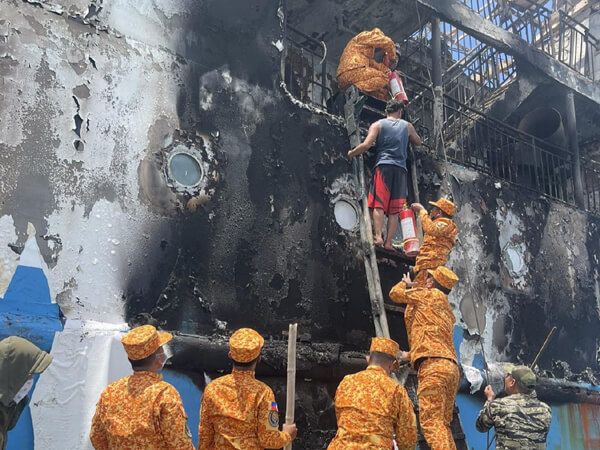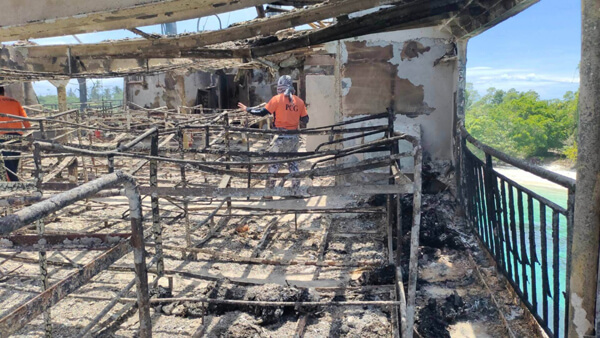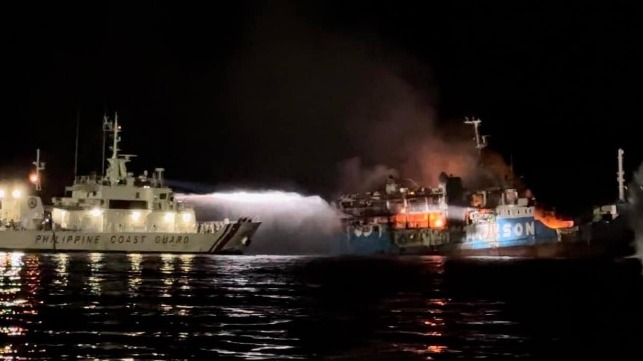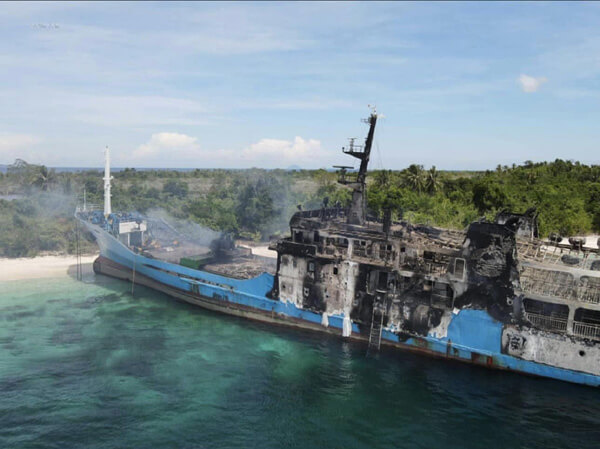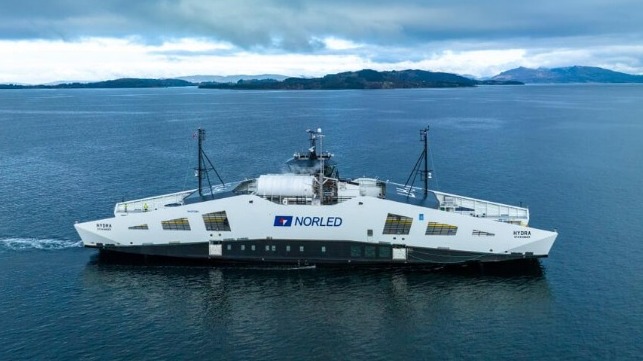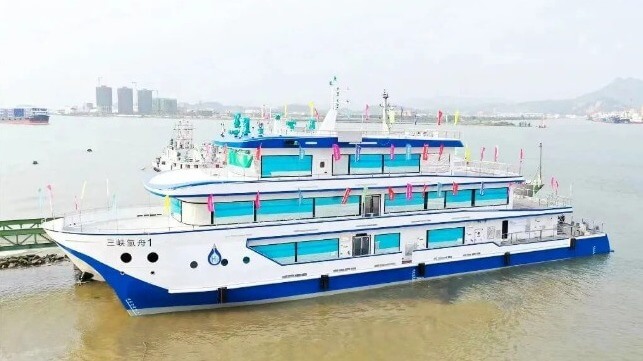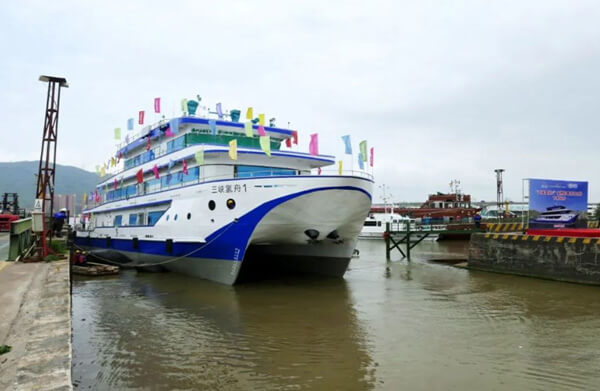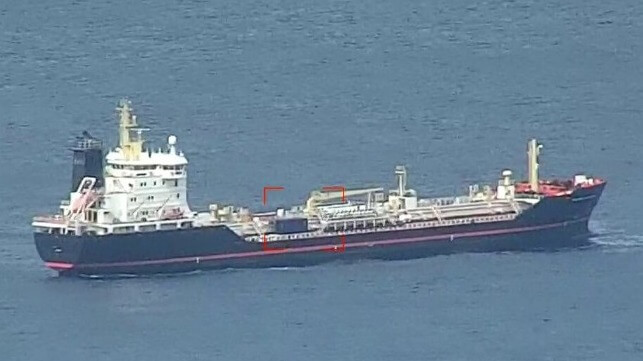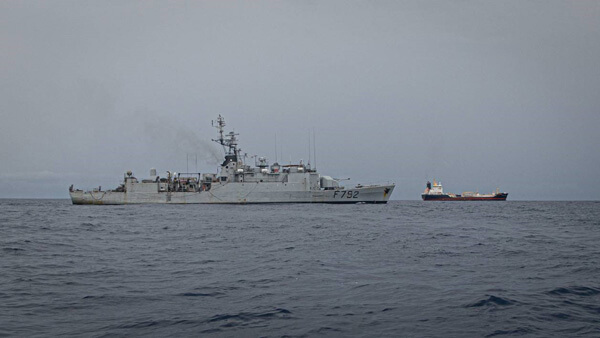Philippines and CIP Agree to First Foreign-Owned Offshore Wind Farms
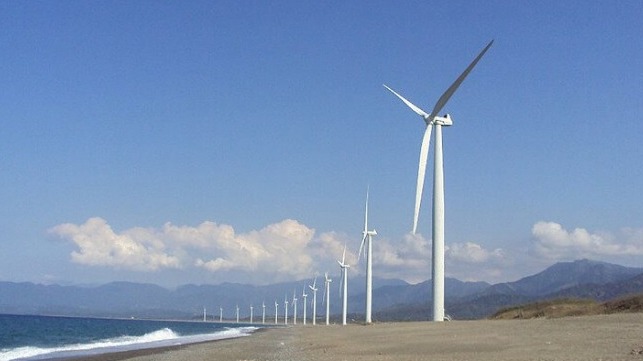
The Philippines Department of Energy signed contracts with Copenhagen Infrastructure New Markets Fund, an affiliate of Danish fund manager Copenhagen Infrastructure Partners, for what will become the country’s first wholly foreign-owned offshore wind projects. The contracts call for three wind farms with a combined capacity of 2,000 MW to be built by the Danish organization and run under 25-year operating licenses. The county has onshore wind power but is yet to start its first offshore project.
The Philippines recently lifted foreign ownership restrictions on renewable energy development. It is part of a program outlined by President Ferdinand Marcos, Jr. to accelerate the development of renewable sources of energy for the country. Niels Holst, Partner in CIP and head of CINMF, said the removal of foreign ownership restrictions on renewable energy projects in the Philippines in 2022 was an important development for his company as it gave them positive signals to launch investments in the country.
“We are pleased with the entry of CINMF, a dedicated fund manager with greenfield renewable energy investments and one of the global leaders in offshore wind,” said Energy Secretary Raphael P.M. Lotilla. “They will be bringing in financial muscle and technological heft and will be working with Filipino partners throughout the construction and operation phases.”
The three projects are to be developed in Camarines Norte and Camarines Sur, offshore of Northern Samar, and offshore of Pangasinan and La Union. Once implemented, the three projects are expected to create around 4,500 jobs during the development and operations period, generate enough power to supply about one million households, and offset about 2.9 million tons in CO2 emissions per year.
The Philippines and the Danish Government have a long-standing cooperation in the development of wind power in the country. The 25 MW Bangui Bay Wind Power Project, developed onshore in 2004 by the Northwind Power Development Corporation in Bangui, Ilocos Norte, was partly funded by the Danish Government through the Danish International Development Assistance (DANIDA). It was a landmark project that paved the way for developing onshore wind power projects in the country and the Southeast Asian Region.
Danish Ambassador Melbin said that the Filipino people deserve more reliable and cheaper electricity. Introducing large-scale renewable energy is the fastest way to achieve this he said.
The Philippines currently has no installed offshore wind operations. The World Bank estimates there is a potential for more than 178 GW of offshore wind in the country. Working with the World Bank, the Philippines Department of Energy last year released an initial plan for offshore wind development.
One of the country’s main power distributors, Aboitiz Power, is currently undertaking a feasibility study exploring the potential for up to 3 GW of offshore wind by 2040. They are expected to complete the study by mid-year.
The Philippines Department of Energy said to date, that 57 Offshore Wind Service Contracts have been awarded with a total potential capacity of about 42,000 MW that will be developed. The DOE targets to bring the renewable energy share in the power generation mix to 35 percent by 2030 and 50 percent by 2040 from the current 22 percent. The World Bank report set out a low estimate of just over 5 percent from offshore wind and a high growth potential to reach 40 percent of the country’s power supply from offshore sources by 2050.
Top photo of Bangui wind farm by Paolo Dala - CC BY-SA 2.0
DOE's Strategy to Accelerate and Expand Offshore Wind Deployment
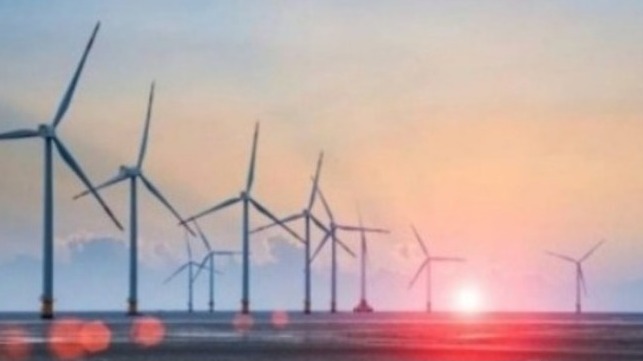
The U.S. Department of Energy (DOE) released its Offshore Wind Energy Strategy, a comprehensive plan uniting many parts of the agency to accelerate efforts to meet the goal to deploy 30 gigawatts of offshore wind energy by 2030 and setting the nation on a pathway to 110 GW or more by 2050. As part of the overall initiatives by the U.S. government focusing on renewable energy, DOE is accelerating its efforts with a focus on lowering costs, developing leadership in floating offshore wind design, and building co-generation technologies.
“The transformative potential of offshore wind energy is critical to achieving President Biden’s clean energy goals,” said U.S. Secretary of Energy Jennifer M. Granholm. “As our Offshore Wind Energy Strategy shows, we’re leveraging all resources across our department to harness this clean and reliable American energy source, which will create tens of thousands of good-paying, union jobs and revitalize coastal communities.”
One of the primary goals of the efforts focuses on lower the cost of the electricity delivered from offshore wind generation. DOE says that its goal is to reduce the cost of fixed-bottom offshore to $51 per megawatt-hour from a current level of $73 per megawatt-hour. The agency is sponsoring R&D as well as efforts to promote development, transmission research, and supply chain development.
A key part of the strategy focuses on the development and deploying floating offshore wind. DOE is leading the efforts in response to the Biden administration’s calls to make the U.S. a leader in the technology. DOE launched the “Floating Offshore Wind Shot,” which aims to reduce the costs of electricity from floating turbines by more than 70 percent. The strategy sets a goal of reducing the cost of floating offshore wind energy in deep water far from shore to $45 per megawatt-hour by 2035.
About two-thirds of the nation’s offshore wind resource potential is in areas with water depths over approximately 200 feet, according to DOE. Last year, DOE along with the Departments of the Interior, Commerce, and Transportation hosted a summit as part of the goal to deploy 15 GW of floating offshore wind capacity by 2035.
Yesterday, DOE also announced the Phase One winners in its three phase Floating Offshore Wind Readiness (FLOWIN) program. Nine companies focusing on addressing elements of the critical manufacturing and supply chain challenges were selected. Each receives $100,000 plus credit for $75,000 of technical support from DOE’s national laboratories. The second pass is set to launch which focuses on mass manufacturing and offers prizes for up to five winners each at $450,000 plus $100,000 in technical services. The total FLOWIN Prize has a cash value of $5.85 million plus up to nearly $1.2 million in technical support.
The Biden administration highlights that these efforts are a continuation of the strategy mapped out that included holding up to seven offshore wind lease sales by 2025. After the record New York Bight auction as well as the Carolina Long Bay and first California auctions, they are moving forward with the Gulf of Mexico while also targeting offshore Oregon and Maine, and the development of areas including off Florida, Georgia, and North and South Carolina.
Supporting this are other elements of the government, including the Maritime Administration (MARAD) which last year awarded grants for nearly $100 million for port projects, MARAD is focusing on staging and assembly facilities, docks for the specialized vessels, and infrastructure development. A further $660 million in funding for port-related infrastructure projects is included in the FY 2023 budget.
DOE highlights that its new strategic plan connects the work happening at the Wind Energy Technology Office with other sectors of the agency. They report that 15 other DOE officers have specific roles as they work to continue the investments in research and development.
Norway Announces Details for First Two Offshore Wind Auctions
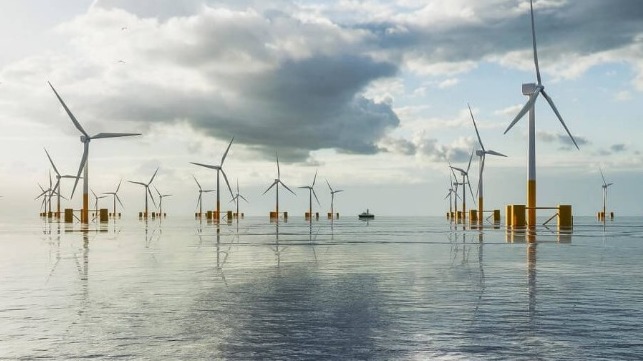
Norway announced the first two lease areas that it will offer as it moves to begin the development of its offshore wind energy industry. It marks a critical first step being taken after an extended period of study on how best to execute the strategy which calls for up to 30 GW of offshore wind energy by 2040.
Two separate auctions are planned with one area in the North Sea near the border with Denmark and a second area along the west coast near the existing oil operations off Stavanger. Norway is using the British auction model for these first two projects with the Minister of Petroleum and Energy reporting that they will propose to parliament an upper limit on any state funding for the projects as they begin to move forward with the industry. Plans call for the awarding of the first projects by the end of 2023 with the government planning to announce new offshore wind areas in 2025.
“Leading Norway through the green shift is one of our major tasks as a government,” said Prime Minister Jonas Gahr Støre at a press event in Oslo. “In order to further develop Norway, the answer to almost all questions is that we need more energy production. And that is why today marks a milestone.”
During the presentation, plans were outlined for the two proposed lease areas which collectively could provide at least 3 GW of wind energy. The Prime Minister noted that the plans for 30 GW are “almost on par with Norway’s total power production last year.” He also highlighted that Norway has five times as much area at sea as it has on land creating a large potential for the wind energy industry. The coastline also has “lots of wind.”
The first project is Sørlige Nordsjø II for which they will offer a single lease for the first phase consisting of 235 square miles. Located in the North Sea, it is suited to fixed bottom wind turbines with an expected 1.5 GW of power production. This first lease process will have a pre-qualification round where companies must document their technical competence and financial strength. Between six and eight companies will proceed into the auction with applications due by August 4, 2023.
The second project, Utsira Nord, is off the west coast and would require floating wind turbines. Currently, they are proposing three lease areas with a total of 386 square miles. Each will have a minimum of 500 MW, but it could be increased to as high as 750 MW based on studies currently underway. Applications are due by September first and Norway plans to use a qualitative criteria designed to facilitate innovation and technology development for floating offshore wind.
After the areas have been allocated, Norway will require the developers to conduct an impact assessment. It will be part of a process to mature the areas and finalize the designs for the country’s first offshore wind power production.
